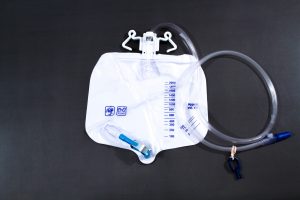
Uncontrollable urination or urinary incontinence occurs in 11 to 34 percent of older men, but it is not just an issue that impacts the aging. Younger men can also experience urinary incontinence due to health problems. The biggest issue with incontinence in men is that they are less likely to speak with their doctors about it. This means that the statistics for men could actually be much higher than the current numbers indicate. Discussing the problem is the first step to addressing the symptoms and finding a treatment.
Below you will find the products that can help men better manage urinary incontinence.
Male incontinence products
Pads and other absorbent products: Absorbent pads line one’s underwear to catch leaks. They are generally effective and easy to use, and come in different varieties to fit a person’s needs.
External catheters: These are flexible tubes inserted into the bladder to help immediately drain urine that collects in the bladder.
Drainage bags: These bags are designed to collect urine from sheaths or catheters.
Urinals and other toilet substitutes: These are devices made for the toilet if a person is unable to sit on the toilet comfortably, may feel unsteady on the toilet, or if it is difficult to clean yourself properly when you’re done. These incontinence products include handheld urinals, bed pans, urine directors, toilet raisers, bidets, and bottom wipers.
Penile clamps/penile compression devices: Penile compression device is a reusable device that is clamped onto the penis. The product is unclamped in order to urinate.
Sheaths: A sheath is similar to a condom and is fitted over the penis to collect urine. This can be connected to a baggy that can later be drained.
Body-worn urinals: Body-worn urinals consist of a disposable bag that collects urine as it leaves the body. They are often an alternative to disposable sheath systems and are fitted onto specially designed underwear.
Devices for penile retraction: Penile retraction device is a small baggy that covers the penis and collects urine that can be drained later.
Where to find urinary incontinence products for men
Urinary incontinence products can be found at drug stores or supermarkets. Medical supply stores, too, will offer these types of products. If heading over to a store is daunting for you, there are many online medical supply stores that offer these products as well. You may want to speak to your doctor first, though, in order to determine what kind of product would be best for you.
Tips to cope with urinary incontinence in men
- Reduce or stop drinking carbonated or caffeinated beverages
- Limit alcohol to one drink a day max
- Eat less of the foods that could irritate the bladder, such as citrus foods, chocolate, tomatoes, vinegars, spices, dairy products, and aspartame
- Quit smoking if you smoke
- Avoid constipation, as this adds stress and pressure to the bladder
- Lose weight if you are overweight
- Try pelvic floor exercises like Kegels which work as if you are trying to hold in urine
- Set a urination schedule every two to four hours
- Make a paste from the skin of a pomegranate, add a pinch to water and consume twice daily
- Consume toasted horse grams for several days
- Eat sesame seeds mixed with jaggery to control frequent urination
- Make a powder of the fenugreek seeds, mix with ginger and weed seeds, as well as with honey or water – consume twice daily
- Consume boiled spinach to help balance the excess of urine flow
- Eat more apples, sweet potatoes, raspberries, beans, bananas, brown rice, and cherries to relieve constipation
- Practice bladder control exercise by holding in your urine for longer periods of time throughout the day – be mindful that holding in your urine for too long when you really have to go can increase the risk of infections, so don’t do it to the point where you are in pain.
- Pay attention to your medication which could worsen urinary incontinence
By combining these home remedies with your prescribed treatment and using urinary incontinence products, you can have greater success in managing your urinary incontinence.
Related: Mood swings in men (irritable male syndrome): Causes, symptoms, and prevention